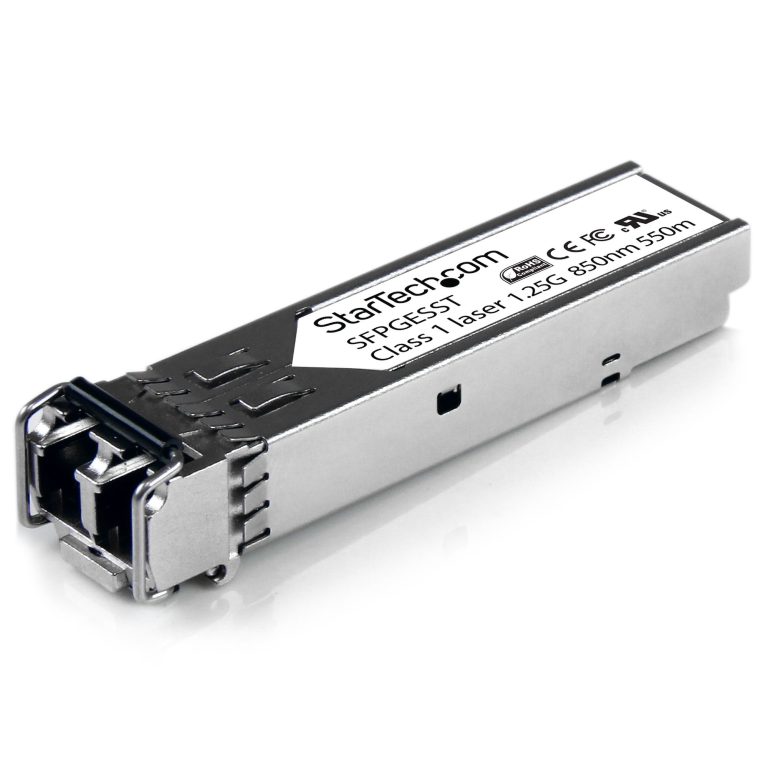In the fast-paced world of networking and data communication, the Small Form-Factor Pluggable (SFP) transceiver has become a key player, offering flexibility, scalability, and efficiency in various networking environments. In this blog post, we’ll dive into the realm of SFP transceivers, understanding their importance, applications, and the evolving landscape of data connectivity.
Unveiling the SFP Transceiver
The Small Form-Factor Pluggable (SFP) transceiver is a compact and hot-pluggable device used in data communication and telecommunications. It is designed to support various communication standards, making it a versatile component in networking equipment. SFP transceivers are commonly used in network switches, routers, and optical transport equipment.
Key Characteristics of SFP Transceivers
- Hot-Pluggable: SFP transceivers are hot-pluggable, meaning they can be inserted or removed from a device without powering it down. This feature allows for flexibility in network management and upgrades.
- Compact Size: The small form factor of SFP transceivers makes them space-efficient, enabling high-density configurations in networking equipment. This is particularly advantageous in data centers where optimizing space is crucial.
- Multimode and Single-Mode Options: SFP transceivers are available in both multimode and single-mode variants, catering to different transmission distances. Multimode is suitable for shorter distances within buildings, while single-mode is designed for longer-distance connections between different locations.
- Various Data Rates: SFP transceivers support a wide range of data rates, from Fast Ethernet to Gigabit Ethernet and beyond. This adaptability makes them suitable for diverse networking applications.
- Multiple Connector Options: SFP transceivers come with different connector options, such as LC, SC, and RJ45, allowing compatibility with various types of fiber optic and copper cables.
Applications of SFP Transceivers
- Ethernet Networks: SFP transceivers are extensively used in Ethernet networks to provide high-speed connectivity between switches, routers, and servers.
- Fiber Channel: In storage area networks (SANs), SFP transceivers play a crucial role in connecting storage devices and ensuring efficient data transfer.
- Telecommunications: SFP transceivers are employed in telecommunications networks for transmitting voice, data, and video signals over long distances.
- Data Centers: Due to their compact size and high data rates, SFP transceivers are widely adopted in data center environments for interconnecting networking equipment and facilitating rapid data exchange.
Evolving Trends in SFP Technology
- Higher Data Rates: With the continuous demand for faster data transfer, there is a trend towards SFP transceivers supporting higher data rates, such as 40G and 100G.
- Enhanced Power Efficiency: Manufacturers are focusing on developing SFP transceivers with improved power efficiency, reducing energy consumption and contributing to greener networking solutions.
- Digital Diagnostics (DDM): Modern SFP transceivers often come equipped with Digital Diagnostics Monitoring, providing real-time information about the transceiver’s operating conditions, facilitating proactive network management.
- Compatibility with Coarse Wavelength Division Multiplexing (CWDM) and Dense Wavelength Division Multiplexing (DWDM): SFP transceivers are now available with CWDM and DWDM capabilities, allowing for increased bandwidth and efficient use of fiber optic infrastructure.
Selecting the Right SFP Transceiver
When choosing an SFP transceiver for a specific application, several factors should be considered:
- Data Rate Requirements: Determine the required data rate for your network application, ensuring the SFP transceiver supports the desired speed.
- Transmission Distance: Consider the distance over which the data needs to be transmitted, choosing between multimode and single-mode variants accordingly.
- Connector Type: Select the appropriate connector type (LC, SC, RJ45) based on the cables and equipment in use.
- Compatibility: Ensure compatibility with the networking equipment, as different devices may have varying requirements for SFP transceivers.
- Future Expansion: Plan for future growth and technological advancements, selecting SFP transceivers that can accommodate potential upgrades.
